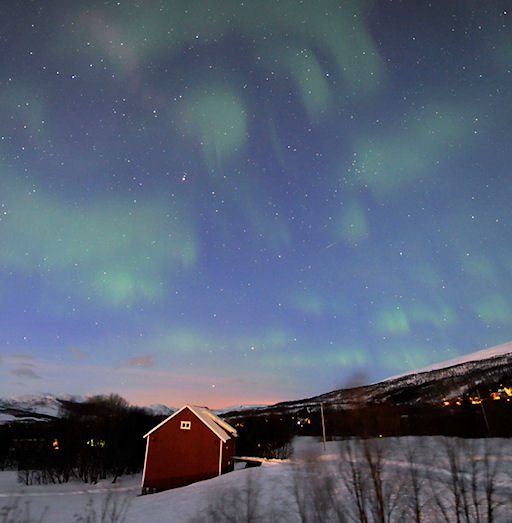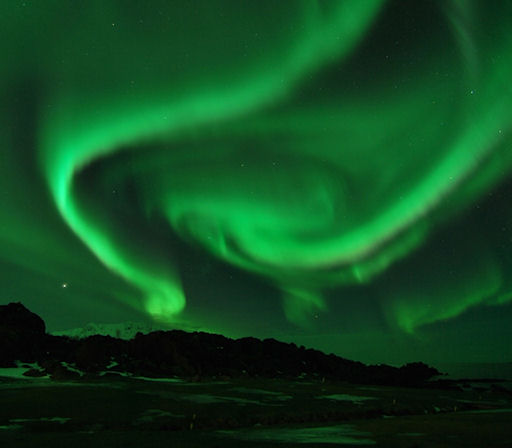PULSATING AURORAS: During the geomagnetic storm of Feb. 4th, Fredrik Broms of Kvaløya, Norway, witnessed an episode of elusive pulsating auroras. "The sky was filled with patches of green that oscillated in brightness," he explains. A snapshot with his Nikon D3 caught the phenomenon in mid-pulse:

Photo details: Nikon D3, AF-S Nikkor 14-24 mm f/2,8, 10 sec, ISO 1000
"The patches didn't move much, but their intensity changed. When one patch got brighter another became more diffuse and so on," Broms describes.
Reports of pulsating auroras go back more than a century, but until recently no one knew what made the aurora borealis behave like a strobe light. Researchers from UCLA solved the puzzle in 2009-10. Using data from NASA's THEMIS spacecraft, they discovered that auroras pulse in sync to 'chorus waves' in Earth's magnetosphere. This is a type of plasma wave that, apparently, can modulate the flow of solar wind particles down to Earth during geomagnetic storms. It sounds cool, too--hence the name 'chorus.'
From SpaceWeather.com

